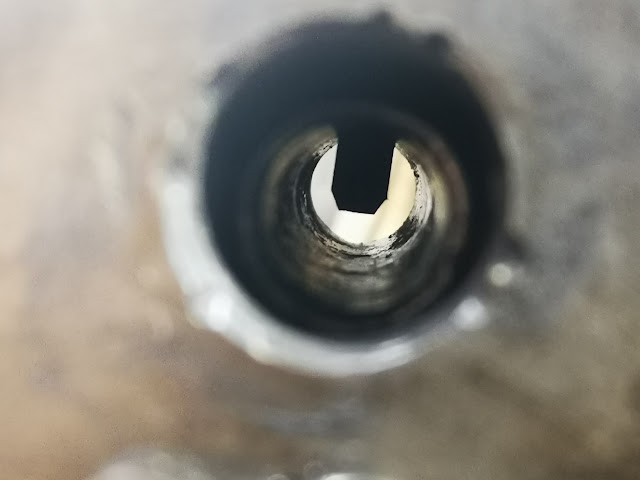Following Thursday’s abortive first attempt, I pulled the cases apart again for a look at the big end nuts and to fit another shim to the drive side main bearing.
Roger Gwynn, all round guru, Ariel Hero and founder of Draganfly Motorcycles (without whom us Arielisti would be lost at sea) told me on the AOMCC Forum that the big end nut/crankcase clearance is close in these engines but you don't need to remove much material to avoid a clash. Roger recommended grinding some material from the cases.
What I've done today is make a 1 mm chamfer on the offending edges of the two timing side nuts, so now I know what clearance I need to provide. If I can provide that clearance without modifying components I will be a happy bunny.
Club member Mick suggested that the fact that no bolt thread protruded beyond the nut wasn’t satisfactory, since the locking part of the nut was probably bearing on a reduced (tapered) part of the thread:
I've ordered a new set of nuts, still self locking but to a slightly shallower pattern (still big end nuts, not something nasty) and I'll use these with larger but thinner washers I think. That will guarantee the self locking bit of the nut is on the full diameter of the bolt thread. I’ll probably have to make the washers myself on the lathe.
Meanwhile, adding a 0.1 mm shim to the 0.25 mm shim already there has given me 0.07 mm end float, or about 0.0027”.
That will do nicely.



















































